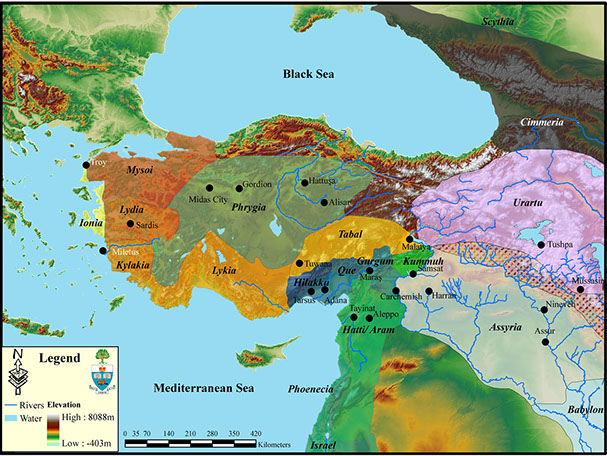The Late Bronze Age (c. 1650-1200 BCE) saw the development of an incredibly interconnected world of a number of well-known kingdoms and empires across the Near East and Eastern Mediterranean: The Egyptians, The Babylonians, The Hittites, the Mycenaean Greeks.
Diplomacy and trade flourished between the various palatial systems of these empires, in parallel to wars, as they fought over control strategic regions or resources. Around 1200 BCE, a crisis emerges that either collapse or significantly contracts most of these empires, and it ushers in a 'Dark Age' for about 200 years.


When the veil is lifted in the 10th century the political geography of the Eastern Mediterranean has changed dramatically. Gone are the expansive empires, replaced by a series of small size polities known alternatively in modern literature as Syro-Hittite, Neo-Hittite or Luwian-Aramean Kingdoms.
Neo-Hittites culture is more an amalgam of many Bronze Age societies, including the Hittites, but also many of the different cultures of Northern Syria, with much of their art and culture is rooted in local traditions of the preceding millennium.
Tell Tayinat, ancient Kunalua, represents the capital city of one of these Neo-Hittite kingdoms, known initially as the Kingdom of Palastin/ Walastin in the Early Iron Age, and later Pattina/ Unqi in the Middle Iron age.
The investigations at Tayinat are playing a pivotal role in developing our historical understanding of the 'Dark Age' after the collapse of the Late Bronze Age empires and the regeneration of state ordered societies in the Iron Age. As well, they are helping to clarify the development of Neo-Hittite culture and the flow of cultural influences in the Near East in the Iron Age.


